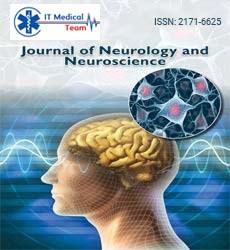Opinion - (2024) Volume 15, Issue 5
Challenges in clinical neurosurgery navigating complex cases
Thanos Vassilopoulos*
Department of Medicine, University of Crete, 71003 Heraklion, Crete, Greece
*Correspondence:
Thanos Vassilopoulos, Department of Medicine, University of Crete, 71003 Heraklion, Crete,
Greece,
Email:
Received: 03-Oct-2024, Manuscript No. ipjnn-24-15386;
Editor assigned: 05-Oct-2024, Pre QC No. P-15386;
Reviewed: 18-Oct-2024, QC No. Q-15386;
Revised: 24-Oct-2024, Manuscript No. R-15386;
Published:
31-Oct-2024
Introduction
Neurosurgery is a field characterized by its complexity,
requiring a unique blend of precision, skill, and in-depth
knowledge of the intricate human nervous system. As
medical advancements continue to evolve, neurosurgeons
are faced with increasingly challenging cases that test their
expertise and adaptability. This article delves into the
multifaceted challenges in clinical neurosurgery, exploring
the intricacies of complex cases, the evolving landscape of
technology, ethical considerations, and the importance of
multidisciplinary collaboration.
Complex neurosurgical cases often involve multiple
pathologies, anatomical abnormalities, and comorbid
conditions. Such as gliomas, meningiomas, or metastatic
brain tumors that may infiltrate vital brain structures.
Conditions like Arteriovenous Malformations (AVMs) or
aneurysms that present significant surgical risks. Cases where
traumatic injuries lead to complications like hemorrhage,
brain swelling, or skull fractures. Such as herniated discs
or spinal stenosis that require careful evaluation and
surgical intervention. Addressing conditions like epilepsy
or movement disorders, which necessitate precise targeting
of brain regions. Each of these scenarios requires not only
technical proficiency but also an understanding of the
broader implications of surgery on the patient's life and
neurological function [1].
Description
One of the significant advancements in neurosurgery
is the development of sophisticated imaging techniques
such as MRI, CT scans, and functional imaging. These
tools play a crucial role in preoperative planning and
intraoperative navigation. Accurate imaging allows for the
visualization of complex anatomical structures, assisting in
the identification of tumor margins, vascular relationships,
and critical neural pathways. For example, advanced
MRI techniques, like Diffusion Tensor Imaging (DTI),
help neurosurgeons map white matter tracts, enabling
them to avoid damage to essential areas during resection.
During surgery, real-time imaging and navigation systems
enhance the surgeon's ability to locate target areas with
precision. Technologies such as intraoperative MRI and
neuronavigation systems enable dynamic adjustments to
surgical plans based on the most current data. However,
reliance on technology also presents challenges, such as
the need for comprehensive training and the potential for
technical malfunctions [2].
The landscape of neurosurgery is continually evolving,
with new techniques and technologies emerging to address
complex cases more effectively. Minimally Invasive
Neurosurgery (MIS) has revolutionized the field, allowing
for reduced recovery times, decreased complication rates,
and improved patient outcomes. Techniques such as
endoscopic surgery and keyhole approaches are gaining
traction, particularly for tumor resections and spine
surgeries. However, these approaches require specialized
training and a steep learning curve for neurosurgeons, as well
as the need for advanced equipment. Robotic systems are
increasingly utilized in neurosurgery, providing enhanced
precision and stability during delicate procedures. While
robotic-assisted surgeries can lead to better outcomes, they
also necessitate a significant investment in training and
resources. Furthermore, there remains an ongoing debate
about the cost-effectiveness and the potential for reduced
surgical autonomy when using robotic systems [3].
Neurosurgeons often grapple with ethical dilemmas,
particularly in complex cases where the prognosis may be
uncertain or where patients have differing expectations.
Informed consent, particularly in surgeries involving
significant risks, requires clear communication about
potential outcomes and complications. Informed consent
in neurosurgery is not merely a formality; it is a process
that involves educating patients about the risks and
benefits of surgery. Patients must understand the potential
for neurological deficits, changes in quality of life, and the
possibility of complications, including death. Surgeons
must ensure that patients are adequately informed while
also being sensitive to their emotional state and cognitive
capacity, especially in cases involving brain tumors or
trauma.
When faced with complex cases, neurosurgeons often
engage in shared decision-making with patients and
their families. This collaborative approach can enhance
patient satisfaction and ensure that treatment plans
align with patients' values and preferences. However, it
also poses challenges in cases where patients may have
unrealistic expectations or where there is disagreement
among family members about the course of action. The
complexity of neurosurgical cases necessitates a team-based
approach, involving various specialists such as neurologists,
radiologists, oncologists, and rehabilitation professionals.
Collaborative care models enhance the ability to address
the multifaceted nature of neurological disorders. A
multidisciplinary team brings diverse perspectives and
expertise, which can significantly improve patient
outcomes. For instance, in cases of brain tumors, a team
may include neurosurgeons, radiation oncologists, medical
oncologists, and neuropsychologists. This collaborative
framework ensures comprehensive care, addressing not
only the surgical needs but also the psychological and
rehabilitative aspects of recovery [4].
Despite the benefits of multidisciplinary collaboration,
challenges can arise in coordinating care among various
specialties. Communication barriers, differing priorities,
and varying approaches to treatment can hinder the
decision-making process. Establishing clear protocols and
regular interdisciplinary meetings can help streamline
collaboration and improve patient care. As technology and
techniques continue to advance, the future of neurosurgery
holds both promise and challenges. Innovations in Artificial
Intelligence (AI) and machine learning are set to transform
diagnostic and surgical processes, allowing for more
accurate predictions of patient outcomes and personalized
treatment plans [5].
AI algorithms are being developed to analyze
vast amounts of medical data, assisting in diagnosing
conditions and predicting surgical outcomes. For example,
machine learning models can identify patterns in imaging
studies that may not be readily apparent to human
observers. While these advancements have the potential to
enhance decision-making, they also raise ethical concerns
regarding data privacy and the reliance on technology
over human expertise. The rapid pace of change in
neurosurgery necessitates ongoing education and training
for neurosurgeons. Engaging in lifelong learning, attending
workshops, and participating in research initiatives will
be crucial for neurosurgeons to stay abreast of the latest
techniques and technologies. Furthermore, fostering a
culture of collaboration and knowledge sharing within
the neurosurgical community can enhance overall practice
standards.
Conclusion
Navigating the challenges of complex cases in clinical
neurosurgery requires a unique blend of technical
skill, advanced knowledge, ethical considerations,
and collaboration. As the field continues to evolve,
neurosurgeons must adapt to new technologies and
techniques while maintaining a patient-centered approach
to care. By embracing multidisciplinary collaboration,
continuous education, and innovative advancements,
neurosurgeons can enhance their ability to navigate the
complexities of their field, ultimately leading to improved
outcomes for patients facing some of the most challenging
neurological conditions.
References
- Akhter MH, Ahmad I, Alshahrani MY, et al. Drug delivery challenges and current progress in nanocarrier-based ocular therapeutic system. Gels. 2022; 8(2):82.
Google Scholar, Crossref, Indexed at
- Bodratti AM, Alexandridis P. Amphiphilic block copolymers in drug delivery: Advances in formulation structure and performance. J Pharmacol Exp. 2018; 15(11):1085-1104.
Google Scholar, Crossref, Indexed at
- Buccino G, Colagè I, Gobbi N, et al. Grounding meaning in experience: A broad perspective on embodied language. Neurosci Biobehav Rev. 2016; 69:69-78.
Google Scholar, Crossref, Indexed at
- Levelt WJ, Roelofs A, Meyer AS. A theory of lexical access in speech production. Behav Brain Sci. 1999; 22(1):1-38.
Google Scholar, Crossref, Indexed at
- Hascup KN, Britz J, Findley CA, et al. LY379268 does not have long-term procognitive effects nor attenuate glutamatergic signaling in AβPP/PS1 mice. J Alzheimers Dis. 2019; 68(3):1193-1209.
Google Scholar, Crossref, Indexed at





